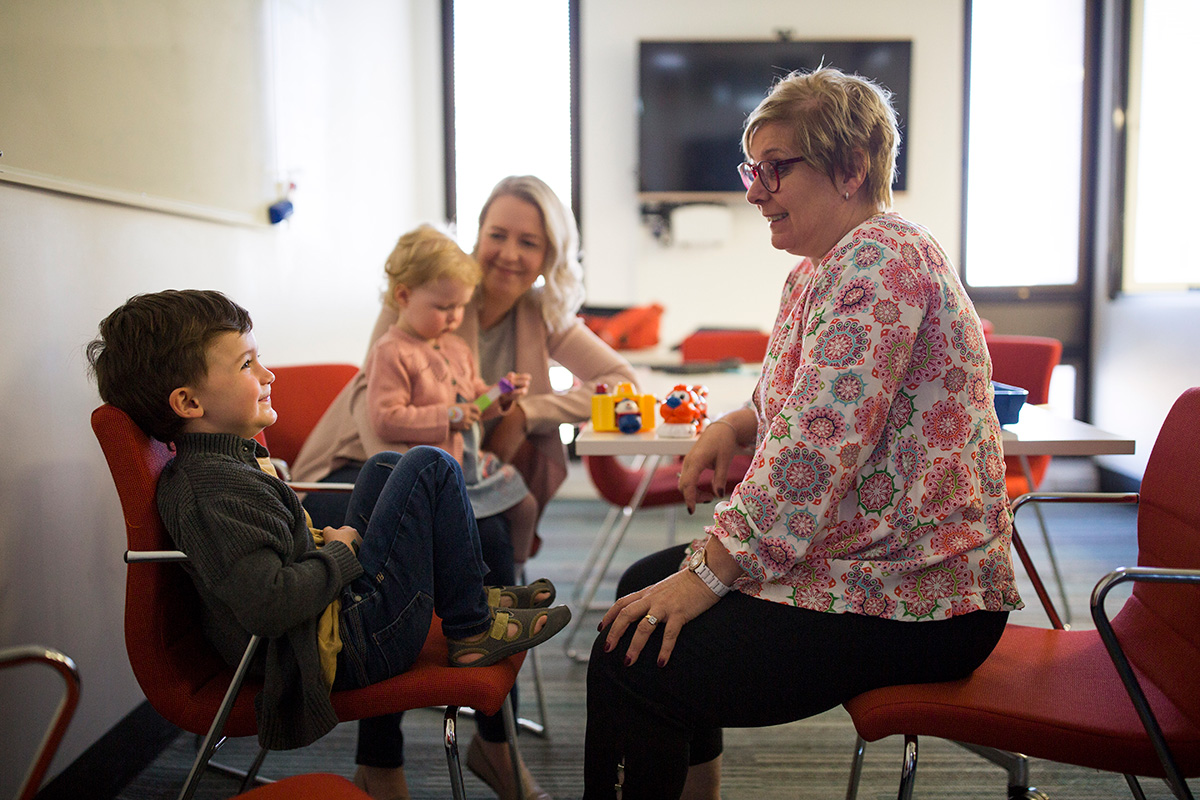This website uses cookies so that we can provide you with the best user experience possible. Cookie information is stored in your browser and performs functions such as recognising you when you return to our website and helping our team to understand which sections of the website you find most interesting and useful.
News
Championing children’s eye health
Dr Sandra Staffieri AO’s efforts to save children’s sight have been recognised in this year’s King’s Birthday Honours.
Saving a child’s sight can come down to how early symptoms like a turned eye or a white pupil are first noticed by parents.
Making sure parents are aware these signs has driven Dr Sandra Staffieri AO’s efforts in research and practice.
“The early signs of eye disease are almost always there – and we have so many treatments available to save children’s sight, and for some more serious diseases such as retinoblastoma, their eye or life,” explains Dr Staffieri.
Dr Staffieri’s years of work to raise awareness of children’s eye health has been acknowledged in this year’s King’s Birthday Honours, when she was named an Officer of the Order of Australia.
But Dr Staffieri, a Research Fellow at CERA and Retinoblastoma Care Coordinator at the Royal Children’s Hospital, says there is still more to be done.

Spotting retinoblastoma
One particularly serious disease is retinoblastoma: a rare form of eye cancer in children.
As it has a genetic component, the children of people who had retinoblastoma receive regular screenings from birth so that tumours are found early, and their eyes can be saved.
However, children without a family history rely on their parents to notice the early signs – and any delays can have significant consequences.
Dr Staffieri first fully considered the impact of delayed diagnosis when she attended the inaugural One Retinoblastoma World Conference in 2012 alongside parents, survivors and clinicians.
“It was like being hit by lightning,” says Dr Staffieri.
“I’d never properly thought about delayed diagnosis for retinoblastoma before that point, but I was struck by how much more we should be doing.
“At that conference I made a note: ‘A glint or squint should make you think’.”
That quote would go on to form the basis of her PhD.
She wondered how diagnosis could be improved if there was more awareness of the early signs of the disease.
“When I returned, the first thing I did was a survey of my patients’ parents to look at how many visits it took for them to get a referral that resulted in the diagnosis,” says Dr Staffieri.
“I was horrified to find that only 30 per cent got a referral on their first visit.
“Sixty per cent needed two or more appointments, and some even needed three, four or five.”
Her efforts culminated in an information pamphlet designed to inform parents and clinicians about the early signs of disease in children such as strabismus, a turned eye, or leukocoria, a white pupil.
By raising awareness of these signs, she aims to make sure children with conditions, including retinoblastoma, benefit from the earliest treatment available.
More awareness
Dr Staffieri hopes that receiving this award will help her spread awareness of these early signs even further.
“We know that something as simple as a poster with a picture of a child with a white pupil can have an incredible impact on awareness wherever it may be – whether it’s a maternal and child health clinic, a church or a supermarket,” she says.
“Even in a country like Australia, medical professionals are not necessarily taking notice of the disease.
“I hope this award opens doors, gives me a giant soapbox and a loud megaphone.
“I hope it makes people take notice of what I’ve got to say, because for me, making sure more people know about this is what this award can do.”
Working between researchers at CERA in the lab and the clinic, as well as at the Royal Children’s Hospital, is also helping her build awareness.
“Being here is such a happy marriage between my clinical work and my research work,” she says.
“I’ve had the privilege to work with children and their families, and I’ve been to their 21st birthdays, their weddings and funerals – you’re in for the long haul.
“And at CERA, I’m connected with the genetic discovery of the cause for eye disease.
“Taken together you have two opportunities to have an impact – immediately with families or on a much broader scale with basic science – and that’s exciting.”
Inspiring vision
Research orthoptist Lisa Kearns, who has worked with Dr Staffieri since 2007, says her passion is inspiring.
“As an orthoptist and vision researcher Sandra has shown the utmost passion and dedication in paediatric ophthalmology.
“She has years of experience and knowledge, but her highest form of knowledge is empathy. ”
Many families would agree Sandra’s outstanding level of compassion and support in children’s and their families lives when they are navigating such a difficult journey.”
Professor David Mackey AO, Professor of Ophthalmology at the University of Western Australia, also celebrated the award.
“When I first met Sandra, when I was an ophthalmology trainee at the Royal Children’s Hospital, I saw her passion for teaching and patient care – particularly with children’s vision and retinoblastoma.
“I was delighted 17 years ago that Sandra could join my research team at CERA – now 60 papers and one PhD thesis later Sandra is now a world leader for advocacy and care delivery for children and families with retinoblastoma.”
Dr Staffieri says she hopes the research will continue to reach more people.
“You only ever want to make a difference, and so to know that you did make a difference for a few people is enough for me.”

